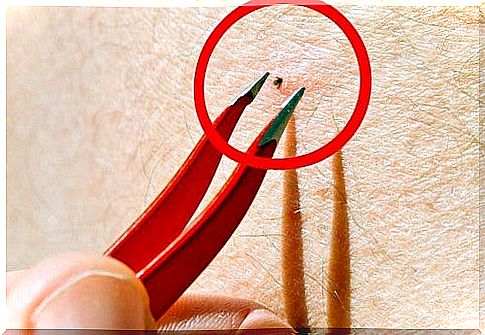Tick Bites: Dangerous For Both Humans And Animals

A tick bite can be dangerous to both humans and animals. These parasites belong to the family ixodidae, and are known as ticks. They are particularly dangerous because they transmit and spread diseases that can infect both humans and animals.
The animals mentioned in this article are particularly prone to severe injury from a tick bite. Babesiosis and Ehrlichiosis are the most common types of ticks for dogs, which can cause chronic anemia, and in the worst case, death.
They like it where it is hot and humid, so they are most often found between the feet, behind or inside the ears, or in the groin of the animals, to feed on the animal’s blood.
To remove ticks from your pet, you should bathe the animal and wash it with medicated shampoo prescribed by a veterinarian, usually once a week. In addition to vacuuming the area where the animal sleeps every fifteenth day, without the animal being present.

However, be careful with the use of the tick poison, to avoid poisoning your animal.
The tick can also transmit certain of the following diseases to humans:
Colorado tick fever
This is a disease that can be transmitted by a type of forest tick ( Dermacentor andersoni ).
It most often occurs in Colorado, USA, which explains the name.
Common symptoms:
- Nausea and vomiting
- Sweating
- Pain behind the eyes
- Light sensitivity
- Fever
- Energy loss
- Painful muscles
Borrelia infection
This disease is transmitted from ticks that have bitten infected rats or deer.
The disease was first registered in the United States, but has also occurred in Europe and Asia.
The disease spreads gradually through three stages, where in the third stage it has spread throughout the body.
In order for the tick to be able to transmit the disease, it must be on the skin for 24 to 36 hours.
Symptoms of the disease:
- Energy loss
- Fever
- Muscle work
- Headache
Black-footed ticks can be so small that they are difficult to detect.
If the disease is detected early, it can be cured with antibiotics.
In the last stage, this disease can create long-term joint pain, in addition to heart rhythm and nervous system problems.
Rocky Mountain Spotted Fever (RMSF)
Caused by a bacterium that is transmitted from ticks that sit on the skin for at least 20 hours.
The tick spreads the infection throughout the United States, as well as Central and South America.
Symptoms:
- Fever
- Headache
- Feeling cold
- Muscle work
- Confusion
If the tick is in the skin, carefully remove it and then start antibiotic treatment to kill the infection.
Tick Paralysis
The sage from some ticks may contain a toxin that can cause paralysis of children. It will usually heal itself if you remove the tick correctly.
Symptoms:
- Prickling
- Slackness
- Inadequate coordination
- Unstable gait
Tularemi
An infection caused by tick bites, in that the tick has been in contact with infected rodents or infected animal meat.
Occurs most frequently in North America, Europe and Asia.
Symptoms:
- Headache
- Fever
- Freezing
- Muscle work
- Weight loss
- Difficulty breathing
This disease can be fatal in about 5% of the untreated cases.
The correct way to remove a tick
To remove the tick, one should follow certain restrictions.
Carefully grasp the tick’s head or mouth with tweezers and gently pull it out. The tick’s eggs and blood can spread, so you should get rid of the tick after you have taken it out. It is also important to make sure that the head is not left in the skin.
Another option is to rub some alcohol, iodine or paraffin over the tick so that it releases the roof by itself.
Plus…
- Do not forget to wear gloves or a paper towel.
- Wash the area around the tick with soap and water , also remember to wash your hands.
- If you do not get rid of the tick’s head, you should call for professional help.
- Keep the tick in a closed box and keep it, should any of the mentioned symptoms occur.
Prevention of tick bites
- Wear long-sleeved sweaters / shirts and long pants if you are going through tall grass or forest areas.
- Wear closed shoes.
- Wear light-colored clothing to make it easier to spot ticks.
- Spray the clothes with insecticide.
- Prevent the skin from being uncovered between the top and your pants.
- Pay attention to your pets, and make regular checks to detect any tick bites.









